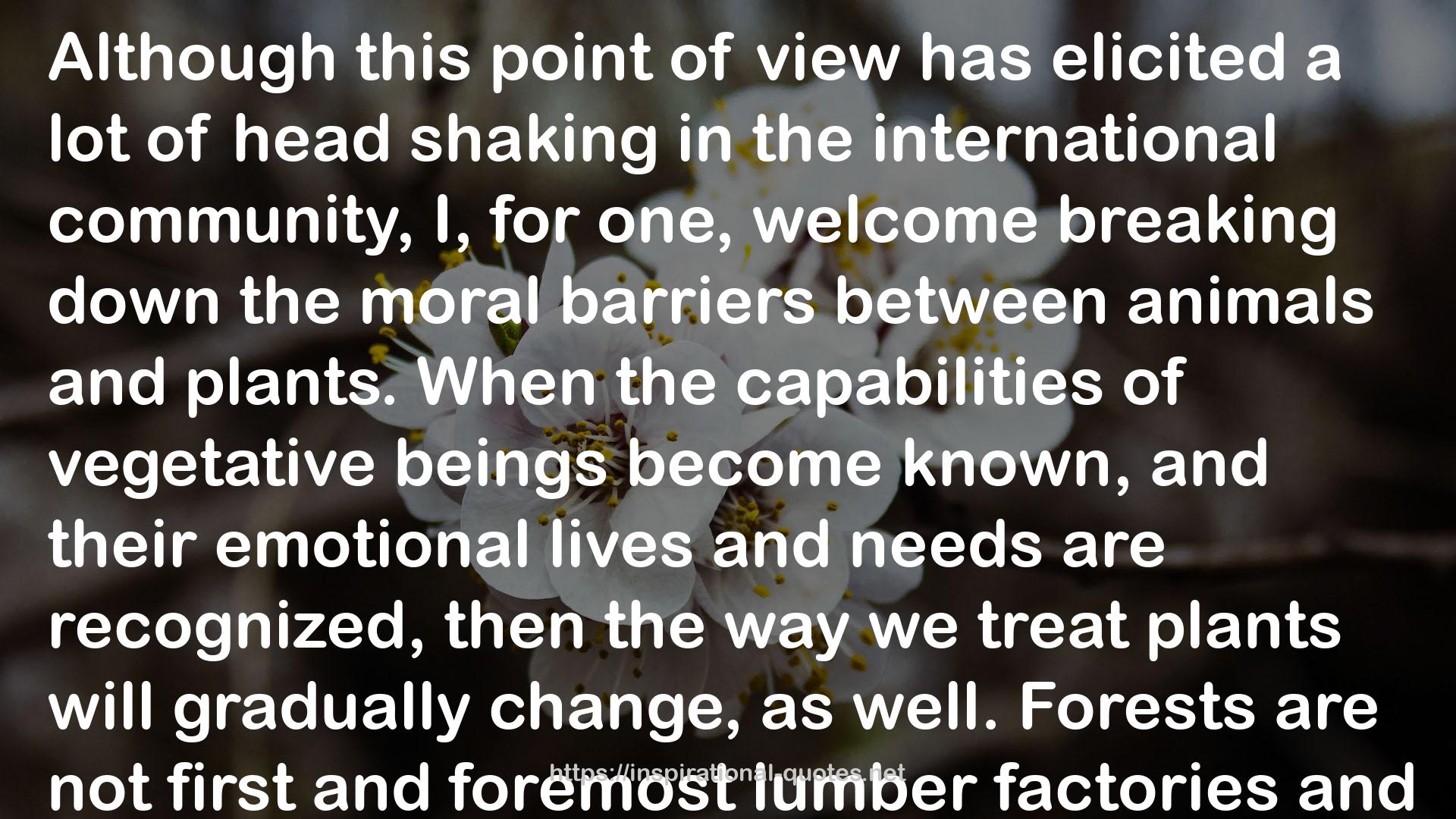" Although this point of view has elicited a lot of head shaking in the international community, I, for one, welcome breaking down the moral barriers between animals and plants. When the capabilities of vegetative beings become known, and their emotional lives and needs are recognized, then the way we treat plants will gradually change, as well. Forests are not first and foremost lumber factories and warehouses for raw material, and only secondarily complex habitats for thousands of species, which is the way modern forestry currently treats them. Completely the opposite, in fact. Wherever forests can develop in a species-appropriate manner, they offer particularly beneficial functions that are legally placed above lumber production in many forest laws. I am talking about respite and recovery. Current discussions between environmental groups and forest users, together with the first encouraging results—such as the forest in Königsdorf—give hope that in the future forests will continue to live out their hidden lives, and our descendants will still have the opportunity to walk through the trees in wonder. This is what this ecosystem achieves: the fullness of life with tens of thousands of species interwoven and interdependent. "
― Peter Wohlleben , The Hidden Life of Trees: What They Feel, How They Communicate: Discoveries from a Secret World
